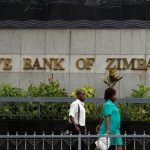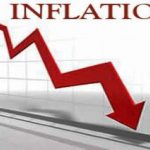The annual inflation rate in the United Kingdom fell more than expected in June, falling below 8%, easing the country’s cost-of-living crisis.
The Consumer Prices Index increased at an annual rate of 7.9 percent, down from 8.7 percent in May, as food price inflation slowed, according to the Office for National Statistics.
The CPI rate was the lowest since March 2022, while analysts had predicted a dip to 8.2 percent. The UK continues to have the highest rate among the G7 countries.
The data sent the British pound sliding against the dollar and euro, although the Bank of England is expected to keep on raising interest rates to combat elevated prices, analysts said.
“Food price inflation eased slightly this (June) month, although it remains at very high levels,” ONS Chief Economist Grant Fitzner stated in the statement.
Although manufacturing costs remained high, he continued, “the pace of growth has slowed over the last year.”
Finance minister Jeremy Hunt noted in a separate statement that “high prices are still a huge worry for families and businesses.
“The best and only way we can ease this pressure and get our economy growing again is by sticking to the plan to halve inflation this year.”
Prime Minister Rishi Sunak has set a target of reducing inflation to five percent by the end of 2023.
In a bid to cool prices, the Bank of England has ramped up interest rates 13 times in a row to the current level of five percent.
The move has sparked mortgage turmoil as commercial lenders lift their own rates on home loans, worsening the cost-of-living crisis.
Following Wednesday’s data, the pound dropped under $1.30 “as softer inflation tempered Bank of England hawks” who favour raising rates, said Ipek Ozkardeskaya, senior analyst at Swissquote Bank.
“But even with a softer-than-expected figure, inflation in Britain remains high and stickier than in other Western economies, and that keeps odds for further BoE action” on raising rates.
Chief UK economist at Capital Economics, Paul Dales, said the latest inflation data was “unlikely to be enough to prevent the Bank of England from raising interest rates in early August” to at least 5.25 percent.
The annual inflation rate in the United Kingdom fell more than expected in June, falling below 8%, easing the country’s cost-of-living crisis.
The Consumer Prices Index increased at an annual rate of 7.9 percent, down from 8.7 percent in May, as food price inflation slowed, according to the Office for National Statistics.
The CPI rate was the lowest since March 2022, while analysts had predicted a dip to 8.2 percent. The UK continues to have the highest rate among the G7 countries.
The data sent the British pound sliding against the dollar and euro, although the Bank of England is expected to keep on raising interest rates to combat elevated prices, analysts said.
“Food price inflation eased slightly this (June) month, although it remains at very high levels,” ONS Chief Economist Grant Fitzner stated in the statement.
Although manufacturing costs remained high, he continued, “the pace of growth has slowed over the last year.”
Finance minister Jeremy Hunt noted in a separate statement that “high prices are still a huge worry for families and businesses.
“The best and only way we can ease this pressure and get our economy growing again is by sticking to the plan to halve inflation this year.”
Prime Minister Rishi Sunak has set a target of reducing inflation to five percent by the end of 2023.
In a bid to cool prices, the Bank of England has ramped up interest rates 13 times in a row to the current level of five percent.
The move has sparked mortgage turmoil as commercial lenders lift their own rates on home loans, worsening the cost-of-living crisis.
Following Wednesday’s data, the pound dropped under $1.30 “as softer inflation tempered Bank of England hawks” who favour raising rates, said Ipek Ozkardeskaya, senior analyst at Swissquote Bank.
“But even with a softer-than-expected figure, inflation in Britain remains high and stickier than in other Western economies, and that keeps odds for further BoE action” on raising rates.
Chief UK economist at Capital Economics, Paul Dales, said the latest inflation data was “unlikely to be enough to prevent the Bank of England from raising interest rates in early August” to at least 5.25 percent.
The annual inflation rate in the United Kingdom fell more than expected in June, falling below 8%, easing the country’s cost-of-living crisis.
The Consumer Prices Index increased at an annual rate of 7.9 percent, down from 8.7 percent in May, as food price inflation slowed, according to the Office for National Statistics.
The CPI rate was the lowest since March 2022, while analysts had predicted a dip to 8.2 percent. The UK continues to have the highest rate among the G7 countries.
The data sent the British pound sliding against the dollar and euro, although the Bank of England is expected to keep on raising interest rates to combat elevated prices, analysts said.
“Food price inflation eased slightly this (June) month, although it remains at very high levels,” ONS Chief Economist Grant Fitzner stated in the statement.
Although manufacturing costs remained high, he continued, “the pace of growth has slowed over the last year.”
Finance minister Jeremy Hunt noted in a separate statement that “high prices are still a huge worry for families and businesses.
“The best and only way we can ease this pressure and get our economy growing again is by sticking to the plan to halve inflation this year.”
Prime Minister Rishi Sunak has set a target of reducing inflation to five percent by the end of 2023.
In a bid to cool prices, the Bank of England has ramped up interest rates 13 times in a row to the current level of five percent.
The move has sparked mortgage turmoil as commercial lenders lift their own rates on home loans, worsening the cost-of-living crisis.
Following Wednesday’s data, the pound dropped under $1.30 “as softer inflation tempered Bank of England hawks” who favour raising rates, said Ipek Ozkardeskaya, senior analyst at Swissquote Bank.
“But even with a softer-than-expected figure, inflation in Britain remains high and stickier than in other Western economies, and that keeps odds for further BoE action” on raising rates.
Chief UK economist at Capital Economics, Paul Dales, said the latest inflation data was “unlikely to be enough to prevent the Bank of England from raising interest rates in early August” to at least 5.25 percent.
The annual inflation rate in the United Kingdom fell more than expected in June, falling below 8%, easing the country’s cost-of-living crisis.
The Consumer Prices Index increased at an annual rate of 7.9 percent, down from 8.7 percent in May, as food price inflation slowed, according to the Office for National Statistics.
The CPI rate was the lowest since March 2022, while analysts had predicted a dip to 8.2 percent. The UK continues to have the highest rate among the G7 countries.
The data sent the British pound sliding against the dollar and euro, although the Bank of England is expected to keep on raising interest rates to combat elevated prices, analysts said.
“Food price inflation eased slightly this (June) month, although it remains at very high levels,” ONS Chief Economist Grant Fitzner stated in the statement.
Although manufacturing costs remained high, he continued, “the pace of growth has slowed over the last year.”
Finance minister Jeremy Hunt noted in a separate statement that “high prices are still a huge worry for families and businesses.
“The best and only way we can ease this pressure and get our economy growing again is by sticking to the plan to halve inflation this year.”
Prime Minister Rishi Sunak has set a target of reducing inflation to five percent by the end of 2023.
In a bid to cool prices, the Bank of England has ramped up interest rates 13 times in a row to the current level of five percent.
The move has sparked mortgage turmoil as commercial lenders lift their own rates on home loans, worsening the cost-of-living crisis.
Following Wednesday’s data, the pound dropped under $1.30 “as softer inflation tempered Bank of England hawks” who favour raising rates, said Ipek Ozkardeskaya, senior analyst at Swissquote Bank.
“But even with a softer-than-expected figure, inflation in Britain remains high and stickier than in other Western economies, and that keeps odds for further BoE action” on raising rates.
Chief UK economist at Capital Economics, Paul Dales, said the latest inflation data was “unlikely to be enough to prevent the Bank of England from raising interest rates in early August” to at least 5.25 percent.
The annual inflation rate in the United Kingdom fell more than expected in June, falling below 8%, easing the country’s cost-of-living crisis.
The Consumer Prices Index increased at an annual rate of 7.9 percent, down from 8.7 percent in May, as food price inflation slowed, according to the Office for National Statistics.
The CPI rate was the lowest since March 2022, while analysts had predicted a dip to 8.2 percent. The UK continues to have the highest rate among the G7 countries.
The data sent the British pound sliding against the dollar and euro, although the Bank of England is expected to keep on raising interest rates to combat elevated prices, analysts said.
“Food price inflation eased slightly this (June) month, although it remains at very high levels,” ONS Chief Economist Grant Fitzner stated in the statement.
Although manufacturing costs remained high, he continued, “the pace of growth has slowed over the last year.”
Finance minister Jeremy Hunt noted in a separate statement that “high prices are still a huge worry for families and businesses.
“The best and only way we can ease this pressure and get our economy growing again is by sticking to the plan to halve inflation this year.”
Prime Minister Rishi Sunak has set a target of reducing inflation to five percent by the end of 2023.
In a bid to cool prices, the Bank of England has ramped up interest rates 13 times in a row to the current level of five percent.
The move has sparked mortgage turmoil as commercial lenders lift their own rates on home loans, worsening the cost-of-living crisis.
Following Wednesday’s data, the pound dropped under $1.30 “as softer inflation tempered Bank of England hawks” who favour raising rates, said Ipek Ozkardeskaya, senior analyst at Swissquote Bank.
“But even with a softer-than-expected figure, inflation in Britain remains high and stickier than in other Western economies, and that keeps odds for further BoE action” on raising rates.
Chief UK economist at Capital Economics, Paul Dales, said the latest inflation data was “unlikely to be enough to prevent the Bank of England from raising interest rates in early August” to at least 5.25 percent.
The annual inflation rate in the United Kingdom fell more than expected in June, falling below 8%, easing the country’s cost-of-living crisis.
The Consumer Prices Index increased at an annual rate of 7.9 percent, down from 8.7 percent in May, as food price inflation slowed, according to the Office for National Statistics.
The CPI rate was the lowest since March 2022, while analysts had predicted a dip to 8.2 percent. The UK continues to have the highest rate among the G7 countries.
The data sent the British pound sliding against the dollar and euro, although the Bank of England is expected to keep on raising interest rates to combat elevated prices, analysts said.
“Food price inflation eased slightly this (June) month, although it remains at very high levels,” ONS Chief Economist Grant Fitzner stated in the statement.
Although manufacturing costs remained high, he continued, “the pace of growth has slowed over the last year.”
Finance minister Jeremy Hunt noted in a separate statement that “high prices are still a huge worry for families and businesses.
“The best and only way we can ease this pressure and get our economy growing again is by sticking to the plan to halve inflation this year.”
Prime Minister Rishi Sunak has set a target of reducing inflation to five percent by the end of 2023.
In a bid to cool prices, the Bank of England has ramped up interest rates 13 times in a row to the current level of five percent.
The move has sparked mortgage turmoil as commercial lenders lift their own rates on home loans, worsening the cost-of-living crisis.
Following Wednesday’s data, the pound dropped under $1.30 “as softer inflation tempered Bank of England hawks” who favour raising rates, said Ipek Ozkardeskaya, senior analyst at Swissquote Bank.
“But even with a softer-than-expected figure, inflation in Britain remains high and stickier than in other Western economies, and that keeps odds for further BoE action” on raising rates.
Chief UK economist at Capital Economics, Paul Dales, said the latest inflation data was “unlikely to be enough to prevent the Bank of England from raising interest rates in early August” to at least 5.25 percent.
The annual inflation rate in the United Kingdom fell more than expected in June, falling below 8%, easing the country’s cost-of-living crisis.
The Consumer Prices Index increased at an annual rate of 7.9 percent, down from 8.7 percent in May, as food price inflation slowed, according to the Office for National Statistics.
The CPI rate was the lowest since March 2022, while analysts had predicted a dip to 8.2 percent. The UK continues to have the highest rate among the G7 countries.
The data sent the British pound sliding against the dollar and euro, although the Bank of England is expected to keep on raising interest rates to combat elevated prices, analysts said.
“Food price inflation eased slightly this (June) month, although it remains at very high levels,” ONS Chief Economist Grant Fitzner stated in the statement.
Although manufacturing costs remained high, he continued, “the pace of growth has slowed over the last year.”
Finance minister Jeremy Hunt noted in a separate statement that “high prices are still a huge worry for families and businesses.
“The best and only way we can ease this pressure and get our economy growing again is by sticking to the plan to halve inflation this year.”
Prime Minister Rishi Sunak has set a target of reducing inflation to five percent by the end of 2023.
In a bid to cool prices, the Bank of England has ramped up interest rates 13 times in a row to the current level of five percent.
The move has sparked mortgage turmoil as commercial lenders lift their own rates on home loans, worsening the cost-of-living crisis.
Following Wednesday’s data, the pound dropped under $1.30 “as softer inflation tempered Bank of England hawks” who favour raising rates, said Ipek Ozkardeskaya, senior analyst at Swissquote Bank.
“But even with a softer-than-expected figure, inflation in Britain remains high and stickier than in other Western economies, and that keeps odds for further BoE action” on raising rates.
Chief UK economist at Capital Economics, Paul Dales, said the latest inflation data was “unlikely to be enough to prevent the Bank of England from raising interest rates in early August” to at least 5.25 percent.
The annual inflation rate in the United Kingdom fell more than expected in June, falling below 8%, easing the country’s cost-of-living crisis.
The Consumer Prices Index increased at an annual rate of 7.9 percent, down from 8.7 percent in May, as food price inflation slowed, according to the Office for National Statistics.
The CPI rate was the lowest since March 2022, while analysts had predicted a dip to 8.2 percent. The UK continues to have the highest rate among the G7 countries.
The data sent the British pound sliding against the dollar and euro, although the Bank of England is expected to keep on raising interest rates to combat elevated prices, analysts said.
“Food price inflation eased slightly this (June) month, although it remains at very high levels,” ONS Chief Economist Grant Fitzner stated in the statement.
Although manufacturing costs remained high, he continued, “the pace of growth has slowed over the last year.”
Finance minister Jeremy Hunt noted in a separate statement that “high prices are still a huge worry for families and businesses.
“The best and only way we can ease this pressure and get our economy growing again is by sticking to the plan to halve inflation this year.”
Prime Minister Rishi Sunak has set a target of reducing inflation to five percent by the end of 2023.
In a bid to cool prices, the Bank of England has ramped up interest rates 13 times in a row to the current level of five percent.
The move has sparked mortgage turmoil as commercial lenders lift their own rates on home loans, worsening the cost-of-living crisis.
Following Wednesday’s data, the pound dropped under $1.30 “as softer inflation tempered Bank of England hawks” who favour raising rates, said Ipek Ozkardeskaya, senior analyst at Swissquote Bank.
“But even with a softer-than-expected figure, inflation in Britain remains high and stickier than in other Western economies, and that keeps odds for further BoE action” on raising rates.
Chief UK economist at Capital Economics, Paul Dales, said the latest inflation data was “unlikely to be enough to prevent the Bank of England from raising interest rates in early August” to at least 5.25 percent.












